Key takeaways:
- Attendee engagement is enhanced by creating a sense of community and personal connections through interactive experiences and emotional resonance with art.
- Utilizing technology, such as augmented reality, and facilitating discussions among guests can significantly elevate the engagement levels during events.
- Hands-on activities like collaborative projects and live demonstrations foster creativity and encourage personal connections, making attendees feel part of the artistic community.
- Measuring success involves understanding emotional feedback and social media mentions to capture the depth of attendees’ experiences beyond just attendance numbers.
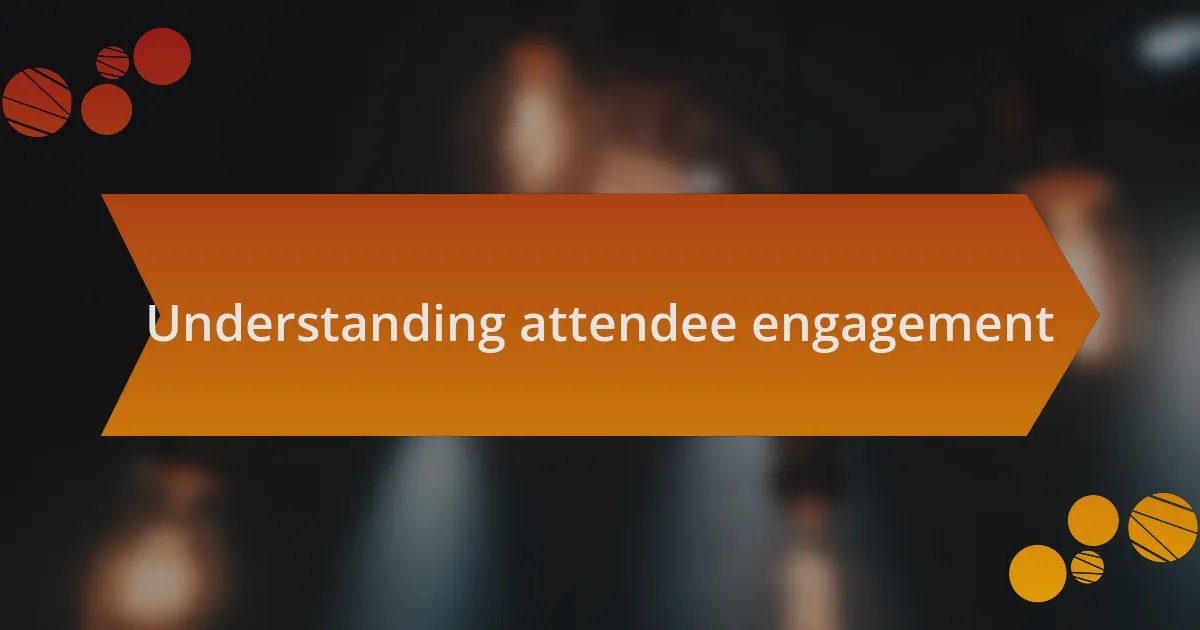
Understanding attendee engagement
Attendee engagement is more than just filling a space; it’s about creating connections and sparking conversations. In my experience, when attendees feel part of something bigger, like a community of art lovers, their engagement levels soar. Have you ever walked into a gallery and felt an instant connection with the artwork? That emotional resonance can transform an ordinary event into an unforgettable experience.
I remember a time when I hosted a small exhibit that focused on local artists. We included interactive elements, such as a live painting session where the audience could suggest themes. The laughter and chatter created a vibrant atmosphere, and attendees shared their thoughts and emotions freely. This not only enhanced their experience but also fostered a sense of belonging, something I believe is essential for meaningful engagement.
Moreover, understanding what drives participation requires us to be attentive. Are attendees looking for educational opportunities, networking, or simply enjoyment? By asking these questions and paying close attention to feedback, I’ve learned to tailor experiences that resonate deeply with different audiences. This approach makes each event unique, ensuring that every attendee leaves with something valuable.
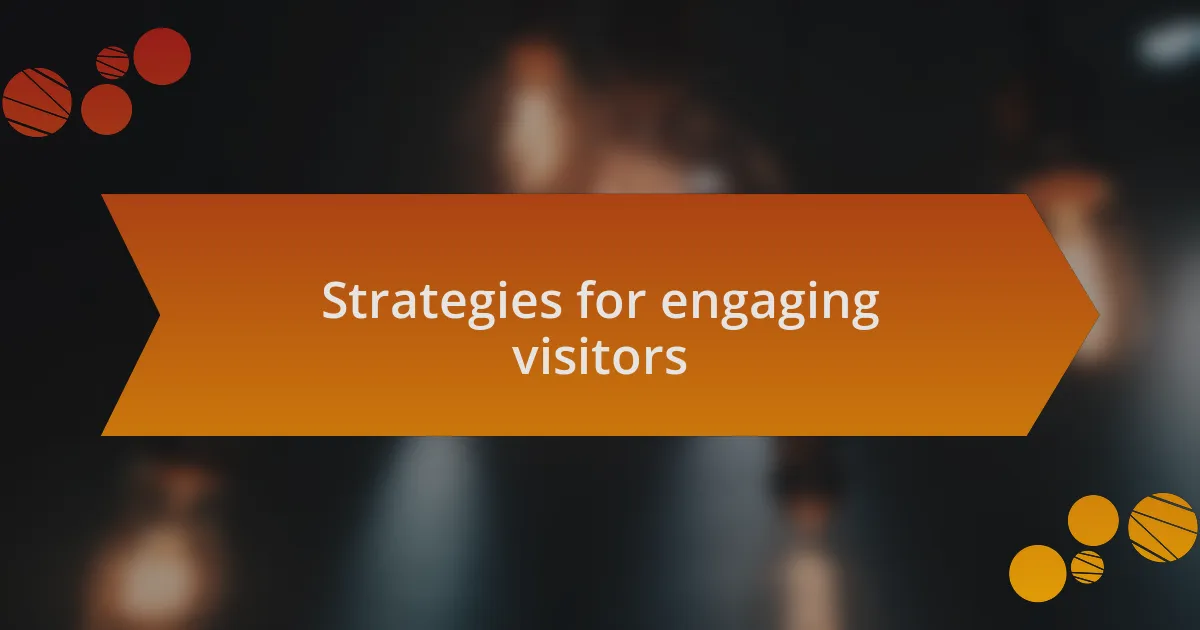
Strategies for engaging visitors
Creating interactive experiences is one of the most powerful strategies for engaging visitors. During a recent gallery opening, I organized a guided tour led by one of the exhibiting artists. This unique opportunity allowed attendees to hear the stories behind the artwork directly from the creator, fostering a deeper connection. It’s fascinating how personal narratives can elevate appreciation, isn’t it?
Another effective approach is to facilitate discussions among visitors. At one of our themed nights, I set up small discussion groups where attendees could share their interpretations of the exhibits. I noted that when guests exchanged ideas, the energy in the room shifted. The artwork became a catalyst for dialogue, and that sense of community really made the event memorable. Have you ever left a gallery feeling like you truly participated in something special?
Moreover, incorporating technology can enhance engagement significantly. I remember introducing an augmented reality (AR) feature for a contemporary exhibit, where visitors could use their smartphones to see the artists explaining their thought processes. Watching their eyes light up as they interacted with the art through this new lens was truly rewarding. It’s like blending the physical with the digital, isn’t it? This kind of innovative approach not only captivates attention but also spurs meaningful conversations long after the event is over.
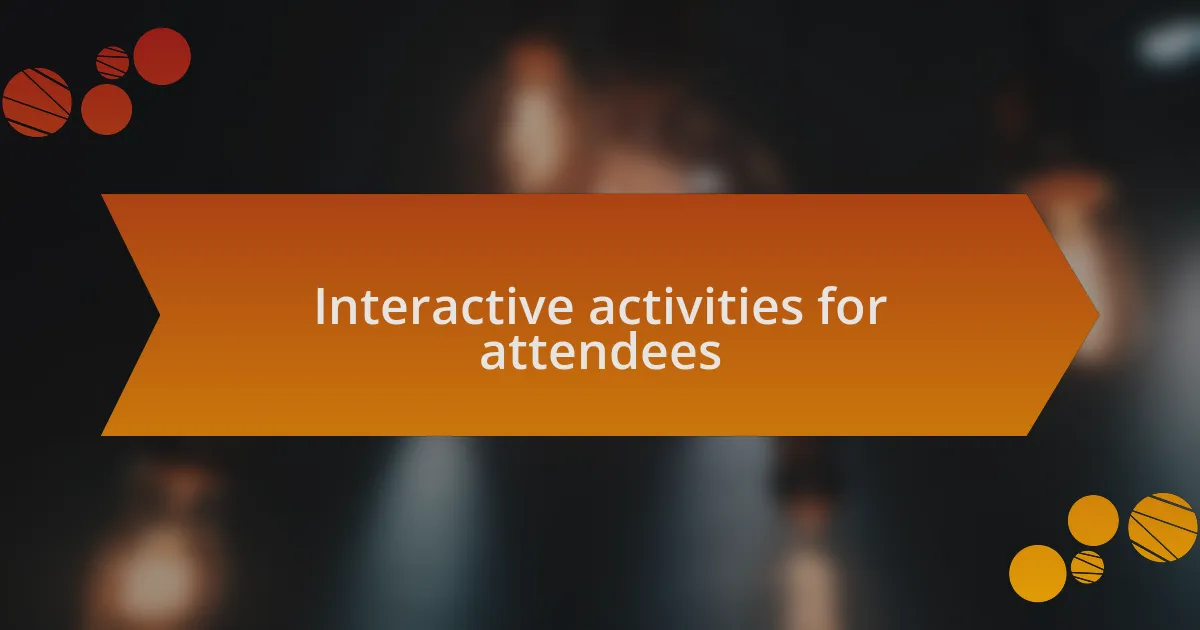
Interactive activities for attendees
One of my favorite interactive activities was a collaborative art project where attendees contributed to a large canvas throughout the event. As people added their unique touches, I watched as strangers bonded over colors and brush strokes. It was incredible to see how a simple activity could break down barriers, allowing them to express themselves creatively and transform the artwork into a beautiful tapestry of collective stories. Have you ever felt part of something larger than yourself in such a tangible way?
I also find that incorporating hands-on workshops can greatly enhance the attendee experience. During one event, I hosted a pottery session led by a local artist. Attendees, regardless of their skill level, rolled up their sleeves, laughed, and shared tips as they shaped their clay. The raw joy of creating something with their own hands not only deepened their connection to the art but also turned the gallery into a vibrant hub of creativity and collaboration. Who knew that turning a lump of clay could stir such enthusiasm?
Another memorable activity involved setting up a ‘living gallery’ where attendees became part of various art pieces. At first, it seemed a bit unconventional, but as people embodied the art through performance, the energy in the room was electric. It sparked conversations that went far beyond the artwork itself, encouraging participants to explore themes of identity and expression in ways I never anticipated. Isn’t it exhilarating how art can transform participants into living expressions of creativity?
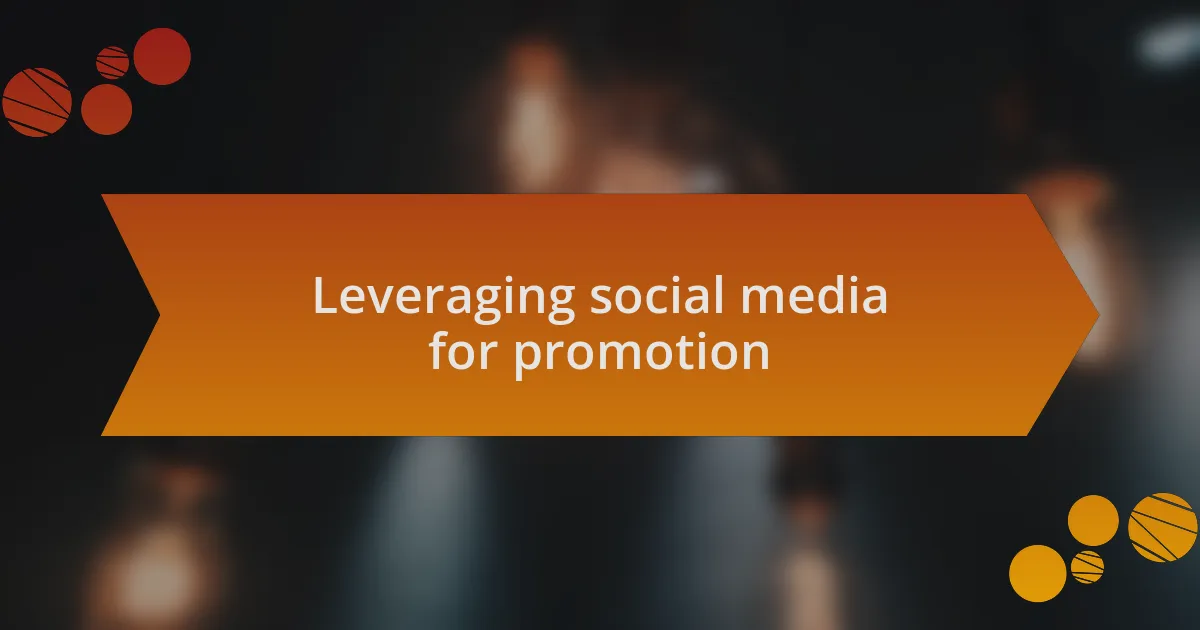
Leveraging social media for promotion
Harnessing the power of social media can significantly elevate an art gallery’s promotional efforts. I remember when I launched an event on Instagram, sharing behind-the-scenes preparation and sneak peeks of the art pieces. The excitement it generated was palpable, with followers eagerly counting down the days. Did you ever consider how a single post could ignite such enthusiasm and curiosity?
In my experience, tailored content for each platform can make a world of difference. For example, I created a Facebook event page filled with engaging visuals, artist quotes, and interactive polls to gauge interest. The result? A thriving online community that supported each other and actively participated in discussions. Have you considered how engaging your audience directly can shape their connection to your gallery?
Additionally, live streaming portions of the event on platforms like Facebook or Instagram has proven invaluable. I vividly recall broadcasting a Q&A session with an artist during an exhibition, which not only attracted attendees but also engaged those who couldn’t make it in person. People love feeling included, don’t you think? This approach not only widens our reach but also fosters a sense of belonging and shared experience among art lovers.
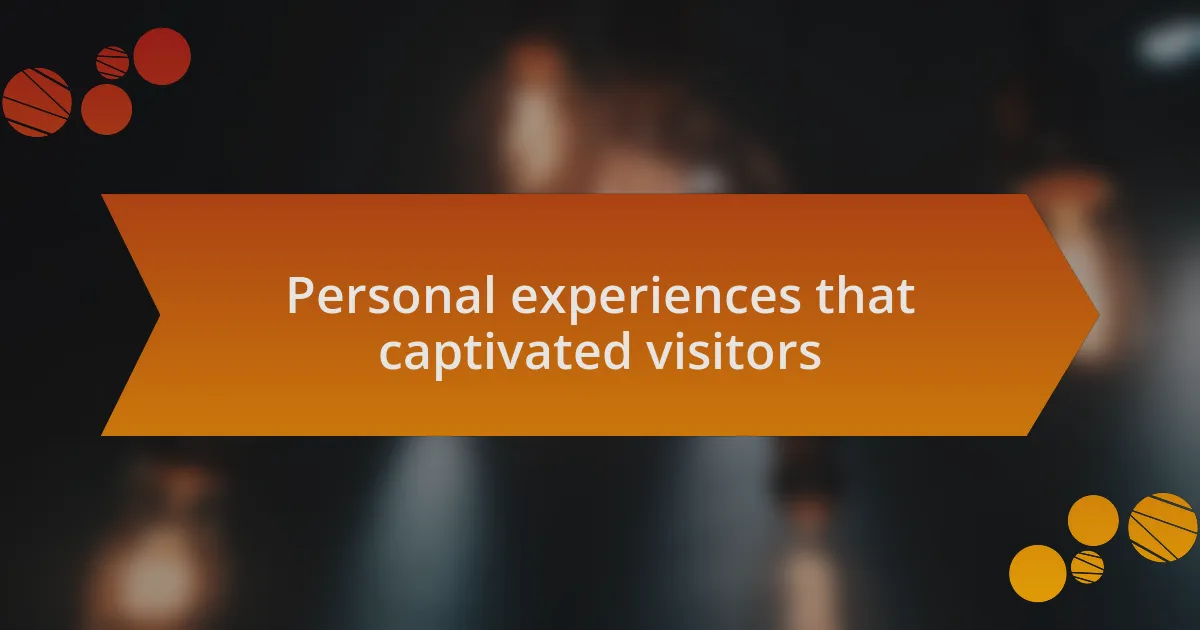
Personal experiences that captivated visitors
When I think back to a recent exhibition featuring local artists, a particular moment stands out. I organized a “meet the artist” gathering, where attendees could engage in candid conversations with creators and gain insights into their creative processes. The spark in visitors’ eyes as they connected with the artists was unforgettable. Have you ever witnessed how a simple conversation can deepen someone’s appreciation for art?
At another event, we set up interactive stations where visitors could create their miniature artworks inspired by the displayed pieces. I’ll never forget watching families collaborate, laughing and sharing ideas. This hands-on experience not only mesmerized attendees but also fortified their connection to the gallery, making them feel as though they were part of the artistic community. Isn’t it amazing how art can bring people together in unexpected ways?
Lastly, I recall a time when we incorporated live demonstrations by artists throughout the gallery space. The atmosphere transformed as visitors gathered around to watch technique unfold before their eyes. The awe and curiosity from onlookers were evident, and many expressed how witnessing the process made the art feel more accessible. Isn’t it intriguing to think about how being a part of the creative journey can enhance one’s enjoyment of the final piece?
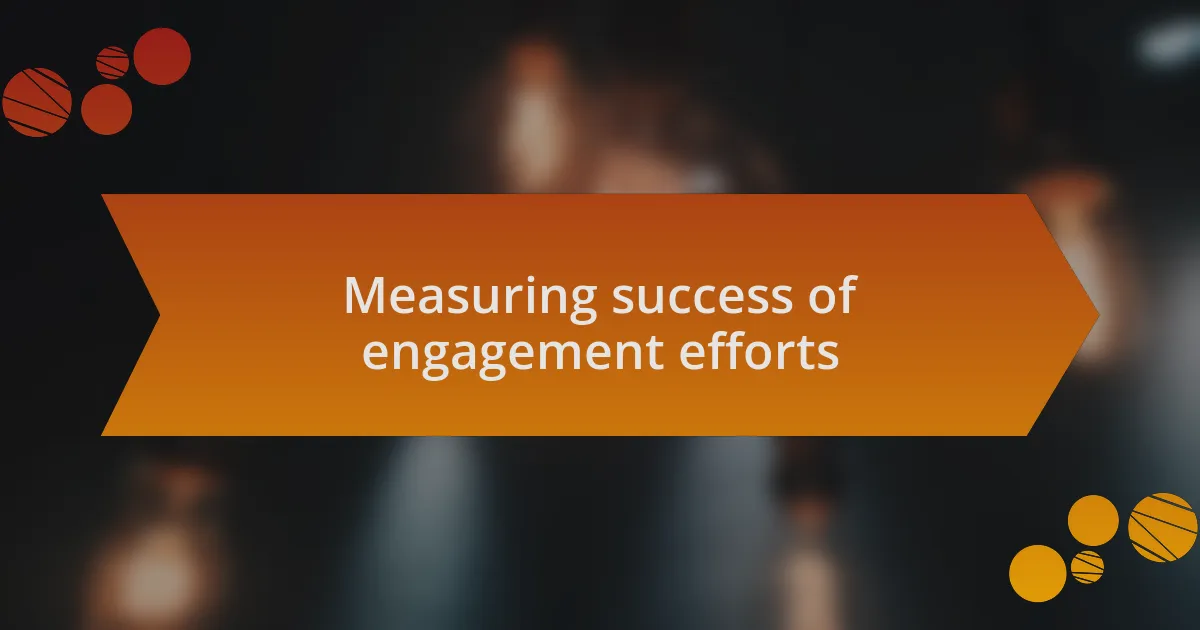
Measuring success of engagement efforts
Measuring the success of engagement efforts isn’t just about numbers—it’s about the stories behind them. I vividly remember an event where we asked attendees to fill out feedback forms after interactive workshops. The responses revealed a wealth of emotions; participants shared how they felt inspired and motivated to pursue their own artistic ventures. Isn’t it fascinating how a few simple questions can uncover such heartfelt connections?
On another occasion, we tracked social media mentions during an exhibition. To my surprise, the posts weren’t just about the artwork; they highlighted personal experiences, like a mother and daughter bonding over their shared creativity. These posts served as a powerful reminder that engagement extends beyond the walls of the gallery. How often do we overlook the online conversations that reflect our offline impact?
Lastly, analyzing attendance metrics was invaluable for understanding engagement levels. I remember a particular exhibit had a record turnout, and many guests lingered well beyond the expected time. By comparing this with previous events, it was evident that the combination of interactive elements and artist discussions sparked deeper interest. Have you ever considered how these subtle shifts can shape overall visitor experience?